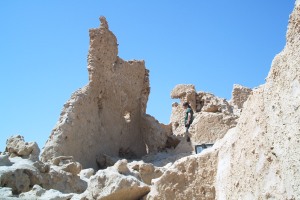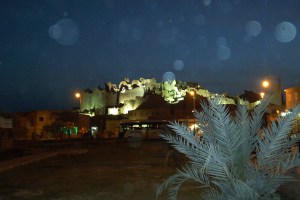April 2008
Monthly Archive
April 7, 2008
Jenni (I just added her to the blogroll by the way) just tagged me and so I’m it. I’m new to this game of blog tag but apparently here’s how the rules go:
Post 10 random things about yourself
*Choose 5 people to tag and a reason you chose each person
*Leave them each a comment directing them to your blog so they know they are it
*You can’t tag the person who tagged you (you’ll have to make new friends)
*As a courtesy to the person who tagged you, please let them know when you have posted so they can have the sheer delight and extra work load of reading your answers)
Here goes.. 10 random things about me
1. I love colored glass – more specifically the play of light through colored bits of glass.
2. One of my kindred-(est) spirits once created a cartoon modeled on me that she called “Dropsy Decibel.” Suffice to say that it’s on target (groan!). The reason I can’t tag her is that she’s not yet a blogger.
3. Students beware… a pet grammatical peeve of mine is the estimation of people and other discrete entities in “amounts” rather than “numbers.” How much of us did you think would fit into the elevator anyhow?
4. Another peeve -When pilots say that the plane will be landing momentarily. Does that mean they’ll take off again within seconds of landing? Because momentarily does not mean in a moment, it means for a moment.
5. When cooking (and I do that a lot) I have one main rule – if its there use it. While that’s a great plan when it comes to edibles, my long suffering friends will tell you that I tend to extend the rule to all the pots and pans in the kitchen as well.
6.I keep meaning to write a publishable Harlequin (or other) romance novel some day. Suggestions for pen names anyone?
7. Of the main land-masses (continents) on planet earth, Antarctica is the only one I’m yet to set foot on. I’ve actually lived (for a continuous stretch of at least 5 weeks) on all of the others.
8. Online scrabble was one of my addictions — actually it would still be if I could get the damn website to work on my computers!@!#$%
9. If I had to choose to spend a day in the life of and as any of my friends I would choose… (drumroll)… Etienne Boaknin. No contest!
10. I prefer tea to coffee (10 years later, not any more)
And now for tagging…
1. AD because he’s so random
2. Tiffany because she’s anything but
3. Yasir – now there’s a conundrum (or as he prefers a Khanundrum), why did I pick him?
4. Sufia – Cairo or pyro, us maniacs are in it together
5. Kate Hinnant (if I can find her) coz she joined the blogwagon so early in the game
Now the five of you are it!
Cya in cyberspace
April 6, 2008
Posted by sankablog under
Coptic adventures
1 Comment
Acknowledgment: A lot of the more academic information contained in this post is courtesy the handout that we received on our faculty trip to the oasis a couple of weeks ago. Needless to say (at least needless for any AUC-ans who might be reading this post) that information was supplied by John Swanson.
Since Siwa is an oasis, I was not surprised in the least to find a vast amount of sand/mud based structures – both natural and man-made – when we reached there. The ruins of the old city shown below are, as expected, made of bricks made of the local soil. What I wasn’t prepared for at all, until I read about it in the aforementioned document, was the omnipresence of salt in all things Siwan. Not just in the kitchens and pantries, which is the normal place to find it, or even in the salt flats by the lakes where it is harvested, but as the very substance of the traditional Siwan homes. The soil (called karshiif) with which the Siwans made the bricks for their buildings, is comprised of a large proportion of salt crystals. Nowhere else have I seen the phrase “salt of the earth” given such literal meaning! Apparently salt provides excellent insulation against both extremes of desert climate, which was probably the reason folks chose it. But problems arise when there is prolonged exposure to moisture or wet climates. Again, not usually a problem in the desert, which is probably why these homes survived as long as they did. However whenever Siwa experiences heavy rainfalls (once every quarter of a century or so) the salt dissolves, destabilizing the brick walls. So the ruins of the city we saw are literally the melted or dissolved walls of the dwelling places of yesteryears.
Photo of a melted wall:

Until recently, people just rebuilt their homes at the same sites after these disasters. Now most of the old city is abandoned — to my utter surprise not ALL of it was and people did in fact still live in these derelict structures. and makes for an interesting site to visit and especially to clamber around in the the evenings and to go up to see the sunset. The facade is beautiful by night – and there’s a romance to walking there at night that’s rather bleached away in the unrelenting glare of the sun by day.

Meanwhile the salt saga does not end there. Later when I went shopping — for olive oil actually – I found salt yet again, in the form of containers. Not just in containers (though they had those too) but as the containers. At first I thought these containers were a rough hewn stone or alabaster, but no, they were made of salt. To my everlasting regret I had no camera, and for some reason (in the interests of being able to carry in undemolished back to Cairo, I suppose) I didn’t buy one. I did however buy a jar of the regular salt as well as an unusual conction they called olive salt. A purplish-black mass of crystals that makes a lovely addition to risottos and salads… but that’s another posting.
Ma’asalaama
April 3, 2008
If the 19th century ruler of Egypt could make good on his dream of creating a Paris on the Nile, then is is so far-fetched to think that Bollywood too can be brought here? I don’t think so. In fact, I may have the perfect forum for that latter romance to flower.The marriage would be more than that of Egyptians with their beloved ‘mitabachchan, though I can’t imagine that he wouldn’t have some sort of screen role. In fact, I can envision him in the role of either Sofkhatep or Tahu different as these character are. But… I’m getting ahead of myself (I say and do that a lot don’t I?)
The union I speak of is that of Egypt’s most famous literary figure in the 20th Century – Naguib Mahfouz – with the institution of Bollywood. Specifically, I’m thinking of Rhadopis of Nubia, one of his early novels, set in ancient Egypt. It has all the ingredients for Hindi movie – the story, the setting, grand tragedy, sweeping romance, beautiful women and men…everything is set up ideally for one of those grand-scale Mughal-e-asm style musicals. Only with pyramids, ancient Egyptian temples etc. for the backdrop instead of Hindu temples or Islamic palaces.
The basic story is drawn from legend. Rhadopis is a courtesan courted by many and whose heart is possessed by none. Until she meets the foolish Pharaoh, who falls in love with her sandal first when its dropped on her lap by a falcon no less (talk about a Pakeezah moment – where he fell in love with her foot), diverts the kingdom’s wealth to her, and neglects all his other duties as well as his long suffering queen. The story ends in Romeo-Juliet style with his murder followed by her suicide, but meanwhile there are other characters (and some among them akin to different Shakesperean plays) to contend with, adding masala and sub-plots. The pharaoh’s closest advisers — the grizzled old lord chamberlain Sofkhatep (yes, this has to to be Amitabh Bachchan as he is nowadays) and the younger-but-not-young fiery-tempered commander Tahu, the wise-and-hence- tragic queen Nitocris, and the young sculptor Benamun all have significant roles.
The Pharaoh’s role is probably the easiest since he needs to be handsome and headstrong – just a spoilt young man really. Any actor will do. All he needs to do is look gorgeous (with his shirt off). Both women are more complex portrayals – the one scene I can think of from Hindi cinema to explain their dynamic is the Rekha-Jaya B confrontation in Silsila (where I must say, no matter what I may have thought of their real lives, I had all my sympathy for Rekha’s character). Certainly the role of Rhadopis would have been ideal for a younger Rekha — dark, beautiful accomplished in many arts… Umrao Jaan moved to Egypt. Most Indians may think of Aishwarya R-B these days, but my own vote would be for a Nandita Das type of beauty, though even younger. On second thoughts, Ash may be be able to pull it off for Rhadopis has but one dimension to her character. But maybe this project ought to be a vehicle to launch a whole new unknown face and talent. The queen needs to have a regal bearing, capable of portraying great grief in her expressions and gestures, with a not-small dose of her own haughtiness – the very accomplished Tabu or Rani Mukherji could pull it off I think. Tahu’s character is probably the most difficult to portray — my personal pick would be Amir Khan, who has shown more range in acting ability than any other Hindi-cinema actor since Nasir-ud-din Shah, in my opinion. And of course the innocent Benamun needs just that one quality — innocence.
Why Bolly vs. Hollywood? Somehow, I can hear the dialogs in my head in Hindi/Urdu. And the scope for Bollywood-esque dance sequences can never be fully realized except in the context of Hindi cinema. The entire opening sequence — aptly titled “The festival of the Nile,” offers sumptuous possibilities, as does the scene preceding Tahu’s and Pharaoh’s visit to Rhadopis’ home where she dances to entertain the assembly in her palace. The whole sandal sequence suggests a fabulously suggestive sequence of dialog and seduction… I could go on.
But enough rambling I think on a wholly fruitless exercise of day-dreaming. Aaah but what a pleasant past-time while it lasted. I really had fun thinking this scenario up. Who knows…maybe someone will have fun acting it out.

